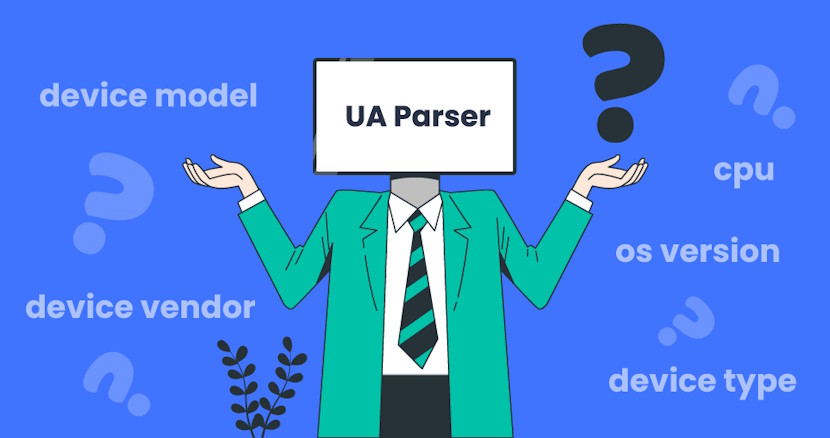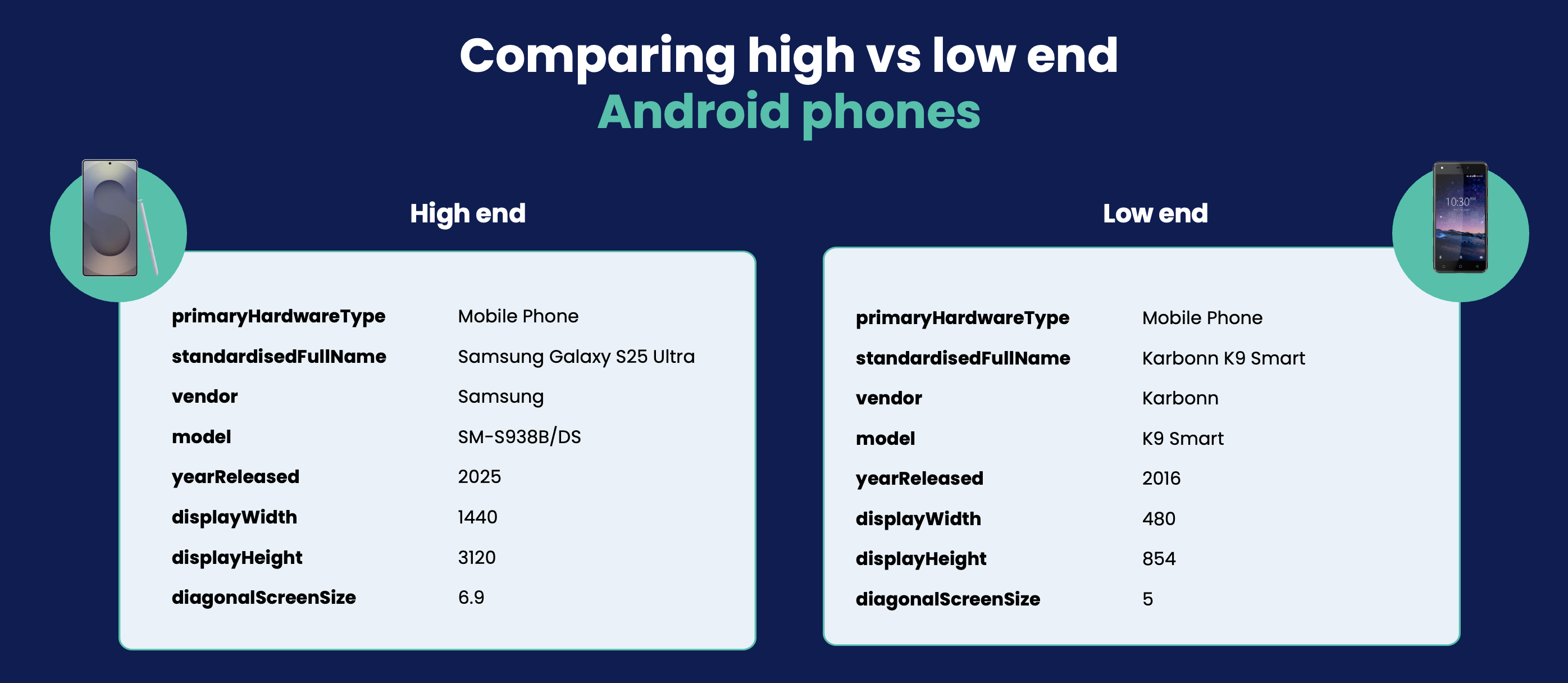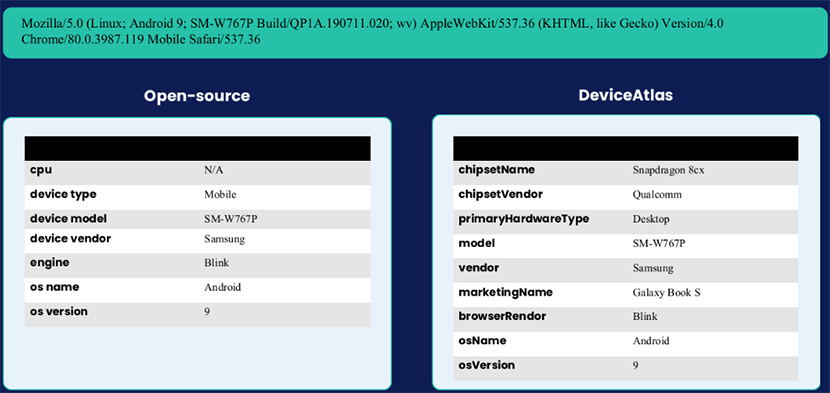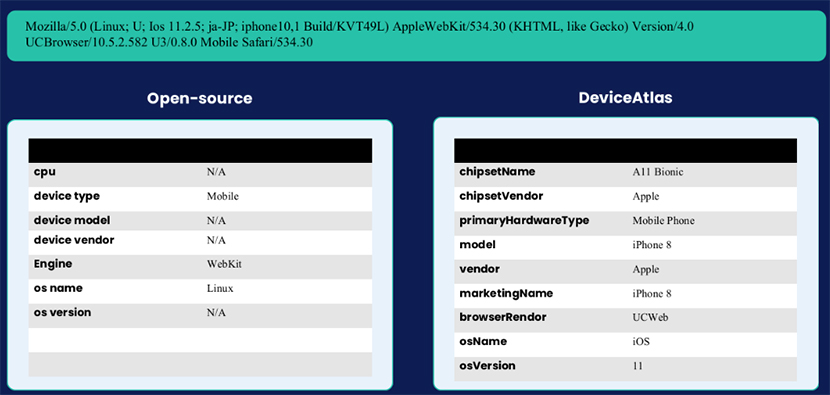
Streaming has officially reached a historic milestone: it is now more used than traditional broadcast and cable TV combined. In May 2025, streaming represented 44.8% of TV viewership. This milestone marks a permanent shift in audience behavior.
The future of watching our favorite shows is no longer anchored to the traditional family TV. In fact, the amount of places we can watch them on is increasing rapidly — laptops, phones, desktops, game consoles, smart refrigerators, car multimedia systems and who knows what next. This is undiscovered territory for all of us, not to mention the OTT platforms themselves like Netflix, Disney and Amazon. The more an OTT provider knows about each device, the sharper the experience.
In order for OTT platforms to maximize their services, it is essential that they have a comprehensive, highly-accurate device intelligence solution. Many businesses have considered a User-Agent open-source solution to provide them with information on their audience’s devices and behavior. However, User-Agent parsers are unable to provide up-to-date information on the latest device models and types. Nor do they have relevant device metadata for OTT platforms which leads to a lot of engineering time and resources spent on building and updating the database. For streaming platforms operating at scale that deal with this in-house, it's worth investing in a device intelligence solution like DeviceAtlas to free up time for more focus on profitable projects.
DeviceAtlas can also provide instant data on 200+ device properties, such as screen size, year released, hardware classification, and display form factor which can help produce a complete picture of streaming audiences.
Now, let’s delve a little deeper into the growing need for precise device data for successful streaming platforms.
Device diversity is accelerating
The catalogue of connected devices grows daily and the gap between their capabilities is widening more and more. Therefore, their streaming capabilities are too.
To highlight the difference between device capabilities, DeviceAtlas compared two different Android phones; one high-end and one low-end. Most notably, the high-end phone’s display width and display height is at least triple the size of the display on the low-end Android. This awareness is invaluable for streaming providers to serve the right content.

By getting a detailed breakdown of device capabilities from a device intelligence solution, streaming providers can tailor the content they deliver to suit individual devices. The more seamless it is for a user to watch a season finale or the last minute of a soccer game, the more likely they are going to continue using the platform.
DeviceAtlas keeps on top of emerging devices as its databases are updated daily. Attempting to stay on top of the constantly changing devices, browsers, OS market with just User-Agent parsing is a costly maintenance job which can soak up resources. Instead, the updates can be taken care of in the background by DeviceAtlas.
Why device intelligence matters for OTT platforms
As mentioned, screens vary and capabilities vary. Without having a thorough breakdown on user devices, it is difficult to personalize, monetize or support at scale. Understanding the devices used by each audience member is the key to improving content delivery. According to Google, there is a 28% YOY growth in the total time spent streaming OTT. Viewership is climbing and therefore, the amount of devices being used to watch is climbing.
With an increasing expectation of flawless content, getting information about OTT devices has never been more important. If viewers have a seamless experience, they are less likely to switch to a competitor. Unlike traditional TV, consumers have the option to instantly cancel their subscription. Nearly 40% of US consumers have admitted to cancelling a TV streaming service in the last year and so the stakes are high for OTT platforms to keep their customers satisfied. If you’d like to read more about how device intelligence can be used to reduce churn in streaming services, check out our blog.
Next, let’s look at the most popular streaming devices and how device intelligence is important for them:
- TVs: Low-end models might not support 4K, HDR, or advanced codecs meaning wasted bandwidth, poor playback, and lower CPMs.
- Desktops: Video performance varies dramatically by browser and OS. Precise targeting protects QoE and avoids over-delivery.
- Set Top Boxes: Many STBs run outdated firmware with limited support; failures mid-stream and ad-delivery glitches follow.
- Phones: Buffering, crashing or layout issues on low-end or foldable devices are invisible churn risks and without accurate identification, they’re impossible to prevent.
- Tablets: Tablets vary greatly in performance abilities. High-bitrate streams fail on low-end models, and UI elements break across screen sizes.
User-Agent parser versus DeviceAtlas
Now that we know why device intelligence supports the most popular OTT devices, let’s drill down further into the potential device insights that can be obtained. We did a comparison between the device information returned from an open-source User-Agent solution and DeviceAtlas. View the drastic differences between the results for each device type below:
TV: User-Agent parser vs DeviceAtlas

Desktop: User-Agent parser vs DeviceAtlas

Set Top Box: User-Agent parser vs DeviceAtlas

Phone: User-Agent parser vs DeviceAtlas

Tablet: User-Agent parser vs DeviceAtlas

It is evident that a device intelligence solution can give businesses a far more comprehensive picture than a User-Agent parser. In some cases above, the User-Agent solution quite simply lacks the information needed to support OTT platforms to understand user devices.
DeviceAtlas collects data from diverse sources globally which gives it maximum coverage of new devices in the market. This premium access to viewers’ devices is what sets DeviceAtlas apart.
Turning accurate device data into revenue
In today’s competitive streaming landscape, one constant remains: the need for precise, reliable device data. Whether you’re monetizing through ads, protecting subscriber lifetime value, or driving smarter bids, knowing exactly what devices are in play is critical. Since accuracy is critical for maximizing revenue, a premium device intelligence solution will always outperform UA parsers.
The beauty of OTT advertising is that it can be hyper-targeted. It is the ultimate platform for reaching targeted audiences with content that suits them and curating viewing experiences by knowing their devices. PwC reported in its Global Entertainment & Media Outlook 2024-2028, that by 2028, advertising will make up almost 28% of streaming services’ revenue.
Through subscriptions, subscribers are made known and this information opens up a whole new world of advertising. Instead of an entire family watching the same ads on TV, OTT platforms can cater for each family member on their own devices with their individual needs, e.g. a father on his tablet can be served a different ad to his teenage daughter on her new iPhone.
Here’s how DeviceAtlas helps OTT platforms such as AVOD, SVOD, FAST, analytics and advertising maximize their revenue:
1. AVOD (Advertising Video on Demand)
By identifying every device model correctly, AVOD platforms like YouTube can both create better viewing experiences and target their ads efficiently. Detailed device data can help AVOD platforms turn every CTV view into premium ad value. Rich device intelligence helps OTT platforms to identify each TV model, which helps serve the correct creative and bitrate.
Knowing device capabilities can prevent revenue loss by stopping mobile CPMs leaking into big screen inventory. Additionally, OTT platforms are consistently kept informed about new devices on the market as DeviceAtlas updates its database daily with any new CTV models, the moment they launch.
2. SVOD (Subscription Video on Demand)
The number of SVOD subscriptions is predicted to reach 1.7 billion by 2027. This is a startling percentage of the world’s population that will consume content on a wide range of devices. It’s rare these days for someone not to have a Netflix account!
However, due to the large number of streaming providers, SVOD platforms face a high risk of churn. It is common for customers to subscribe to an introductory offer or binge-watch a particular series and then cancel. Streaming services need to personalize bitrates to match stream profiles to actual device capabilities. This will catch device-driven churn before subscribers hit the cancel button. By knowing the device capabilities, services can protect subscriber LTV.
3. FAST (Free Ad-Supported TV)
FAST platforms focus on optimizing the user experience and increasing ad revenue through understanding devices thoroughly. FAST channels insert their ads dynamically, meaning that they automatically tailor guide width, navigation and fonts for each TV OS. This approach contributes to high CPMs.
There is also the opportunity to increase CTV revenue on FAST platforms. It is possible to boost bid density and buyer trust with verified device fields. Not only that, but with extensive device data, it is much easier to time ad breaks correctly. Thus, by knowing user devices, FAST providers can sync ad-break timing with each device’s performance budget.
4. Streaming Analytics
When it comes to analytics, accessing deep device insights is a game-changer for streaming services. DeviceAtlas provides reliable, accurate metadata on user devices, which helps OTT platforms connect with their viewers on a much deeper level.
OTT platforms can discover hidden device-level clarity with DeviceAtlas’s extensive insights. It is possible to increase client retention by spotting viewer trends, user engagement, session duration and much more. Using this information to improve streaming experiences is a powerful way to reduce churn.
5. AdTech
For AdTech companies, understanding devices is crucial. DSPs (Demand-Side Platforms) can bid confidently because they can both fill in any missing device fields via User-Agent lookup and auto-populate device targeting options in UA. With regards to SSPs (Supply-Side Platforms), they can inject DeviceAtlas object into every bid request in real time and therefore target more accurately.
Advertising companies can optimize their creative strategy by picking the best video or ad format for the device it's being streamed on. That’s where detailed device data comes in for Ad servers. Plus, they can also save money by reducing invalid traffic and fraud.
Therefore, streaming services can deliver what their audience needs and wants with accurate device intelligence. Major possibilities open up when OTT platforms tailor content to suit every individual and every household. Choosing a device intelligence solution instead of a User-Agent parser is the way forward for driving better profitability. Put simply: The right data drives the right business results.
Proof of success: MobileFuse
MobileFuse, a leading mobile advertising platform, has experienced immense success by opting for a robust device intelligence solution like DeviceAtlas. Before using DeviceAtlas, their in-house User-Agent parser struggled to identify the full spectrum of CTVs. This led to data mismatches with clients, lower bid rates and revenue leakage.
By seamlessly integrating DeviceAtlas’s reliable solution, MobileFuse:
- Improved bid rates by 16% within 24 hours.
- Increased revenue by 18%
- Enhanced OS detection by 123%
- Eliminated manual parser maintenance
- Received daily device updates
You can read more about our MobileFuse’s success here.
Conclusion
No matter what the focus of an OTT platform is, constantly updated device intelligence can transform their business results. Choosing a premium device solution instead of an open-source User-Agent parser can have a massive impact on improving streaming performance. That’s why the world’s leading streaming companies rely on DeviceAtlas to empower their platforms to succeed.



